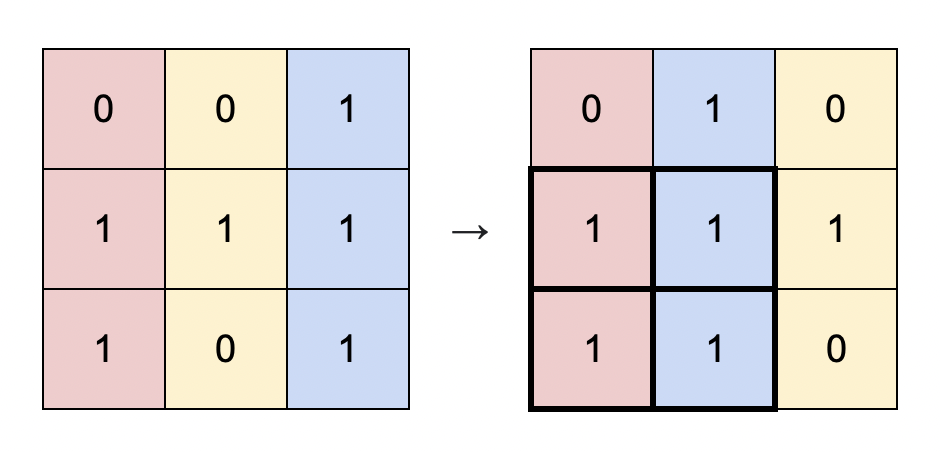1727. Largest Submatrix With Rearrangements
Description
You are given a binary matrix matrix of size m x n, and you are allowed to rearrange the columns of the matrix in any order.
Return the area of the largest submatrix within matrix where every element of the submatrix is 1 after reordering the columns optimally.
Example 1:

Input: matrix = [[0,0,1],[1,1,1],[1,0,1]] Output: 4 Explanation: You can rearrange the columns as shown above. The largest submatrix of 1s, in bold, has an area of 4.
Example 2:

Input: matrix = [[1,0,1,0,1]] Output: 3 Explanation: You can rearrange the columns as shown above. The largest submatrix of 1s, in bold, has an area of 3.
Example 3:
Input: matrix = [[1,1,0],[1,0,1]] Output: 2 Explanation: Notice that you must rearrange entire columns, and there is no way to make a submatrix of 1s larger than an area of 2.
Constraints:
m == matrix.lengthn == matrix[i].length1 <= m * n <= 105matrix[i][j]is either0or1.
Solutions
Solution: Sorting
- Time complexity: O(m*nlogn)
- Space complexity: O(mn)
JavaScript
js
/**
* @param {number[][]} matrix
* @return {number}
*/
const largestSubmatrix = function (matrix) {
const m = matrix.length;
const n = matrix[0].length;
const dp = matrix.map(row => row.map(value => value));
let result = 0;
for (let row = 1; row < m; row++) {
for (let col = 0; col < n; col++) {
if (!dp[row][col]) continue;
dp[row][col] += dp[row - 1][col];
}
}
for (let row = 0; row < m; row++) {
dp[row].sort((a, b) => b - a);
for (let col = 0; col < n; col++) {
if (!dp[row][col]) break;
result = Math.max(dp[row][col] * (col + 1), result);
}
}
return result;
};